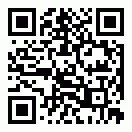I attended the recent Spatial Information Day (SID) which was held at the Wine Centre in Adelaide, South Australia. (Aug. 2007). Spatial Information Day's (SID) provide opportunities to showcase innovative spatial technologies and projects.
The event was an outstanding success, highlighting the diversity of projects and geospatial technologies, high level of expertise, potential careers in the geospatial industry using Geographical Information Systems (GIS) and valuable networking opportunities. The beautiful venue, brilliant weather (late winter) and excellent South Australian hospitality topped off a memorable day.
The presentations are now available on the website.
Examples include :
'Global initiatives on environmental assessment & early warning: outlook to contributions of remote sensing & related geospatial technologies';
'Post Tsunami Banda Aceh - illustrative & spatial overview';
'Practical support for local level change: how spatial information can assist Aboriginal management of heritage at the local level in South Australia';
'The (South Australian) State Land & Soil Information Framework - what is it and what can it do?'
'Managing the Small Plague Grasshopper Control Program using GIS';
'Integration of Spatial Tools for Prioritisation of the River Murray Floodplain' & many more.
SID is already in my calendar for 2008.
Tuesday, September 11, 2007
Monday, September 10, 2007
Mahara (open source) PLE
I discovered Mahara while doing some research on Personalised Learning Environments (PLEs) and e-Portfolios. Mahara emanates from New Zealand and means 'think' or 'thought' in Te Reo Māori. It is a "fully featured open source electronic portfolio, weblog, resume builder and social networking system, connecting users and creating online communities." It stands out from many others in its aim to be more student-centric.
Mahara has an impressive range of tools designed to allow users to "demonstrate their life-long learning, skills and development over time" and the ability for users to select and control who can see their Artefacts. Discussion around a Roadmap about self assessment grids is worth following. Check the lernenzwei 'GPS for Learning' project for more information.
Mahara features include a file repository, blogging tool (creation of Artefacts), all important social networking capabilities and a résumé builder. All Artefacts have built-in metadata to aid discovery. Check the website for more technical considerations.
Another area of interest is the JISC (UK) SPLASH project in higher education which aims to "provide a more personalised learning experience....and ... management of artefacts," developed by the creative efforts of learners using popular Web2.0 mashup technology.
David Delgado's posting "On E-learning 2.0 and the Personal Learning Environment (PLE)" provides an excellent visualization and definition of a PLE as "systems that help learners take control of and manage their own learning, they are distributed, social and learner-centric." He uses another open source product, Elgg (which I have experimented with in recent years)and complements this with a range of Web2.0 tools and Moodle.
So much to explore! The PLE tag in Del.icio.us has been great!
Mahara has an impressive range of tools designed to allow users to "demonstrate their life-long learning, skills and development over time" and the ability for users to select and control who can see their Artefacts. Discussion around a Roadmap about self assessment grids is worth following. Check the lernenzwei 'GPS for Learning' project for more information.
Mahara features include a file repository, blogging tool (creation of Artefacts), all important social networking capabilities and a résumé builder. All Artefacts have built-in metadata to aid discovery. Check the website for more technical considerations.
Another area of interest is the JISC (UK) SPLASH project in higher education which aims to "provide a more personalised learning experience....and ... management of artefacts," developed by the creative efforts of learners using popular Web2.0 mashup technology.
David Delgado's posting "On E-learning 2.0 and the Personal Learning Environment (PLE)" provides an excellent visualization and definition of a PLE as "systems that help learners take control of and manage their own learning, they are distributed, social and learner-centric." He uses another open source product, Elgg (which I have experimented with in recent years)and complements this with a range of Web2.0 tools and Moodle.
So much to explore! The PLE tag in Del.icio.us has been great!
Labels:
e-Portfolio,
mashup,
open source,
PLE,
social networking,
web2.0
Subscribe to:
Posts (Atom)




